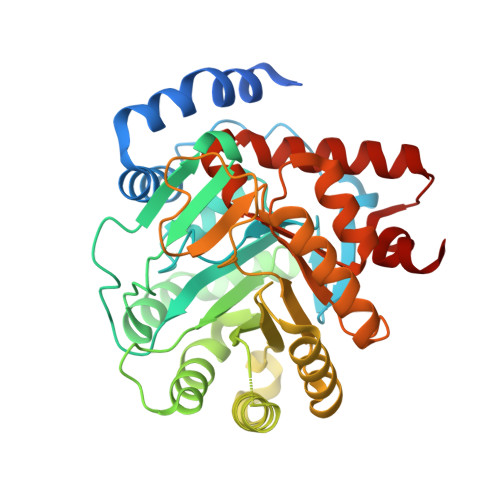Targeting Myeloid Differentiation Using Potent 2-Hydroxypyrazolo[1,5- a]pyridine Scaffold-Based Human Dihydroorotate Dehydrogenase Inhibitors.
Sainas, S., Pippione, A.C., Lupino, E., Giorgis, M., Circosta, P., Gaidano, V., Goyal, P., Bonanni, D., Rolando, B., Cignetti, A., Ducime, A., Andersson, M., Jarva, M., Friemann, R., Piccinini, M., Ramondetti, C., Buccinna, B., Al-Karadaghi, S., Boschi, D., Saglio, G., Lolli, M.L.(2018) J Med Chem 61: 6034-6055
- PubMed: 29939742
- DOI: https://doi.org/10.1021/acs.jmedchem.8b00373
- Primary Citation of Related Structures:
6FMD - PubMed Abstract:
Human dihydroorotate dehydrogenase ( hDHODH) catalyzes the rate-limiting step in de novo pyrimidine biosynthesis, the conversion of dihydroorotate to orotate. hDHODH has recently been found to be associated with acute myelogenous leukemia, a disease for which the standard of intensive care has not changed over decades. This work presents a novel class of hDHODH inhibitors, which are based on an unusual carboxylic group bioisostere 2-hydroxypyrazolo[1,5- a]pyridine, that has been designed starting from brequinar, one of the most potent hDHODH inhibitors. A combination of structure-based and ligand-based strategies produced compound 4, which shows brequinar-like hDHODH potency in vitro and is superior in terms of cytotoxicity and immunosuppression. Compound 4 also restores myeloid differentiation in leukemia cell lines at concentrations that are one log digit lower than those achieved in experiments with brequinar. This Article reports the design, synthesis, SAR, X-ray crystallography, biological assays, and physicochemical characterization of the new class of hDHODH inhibitors.
- Department of Molecular Biotechnology and Health Sciences , University of Turin , Turin 10126 , Italy.
Organizational Affiliation:























